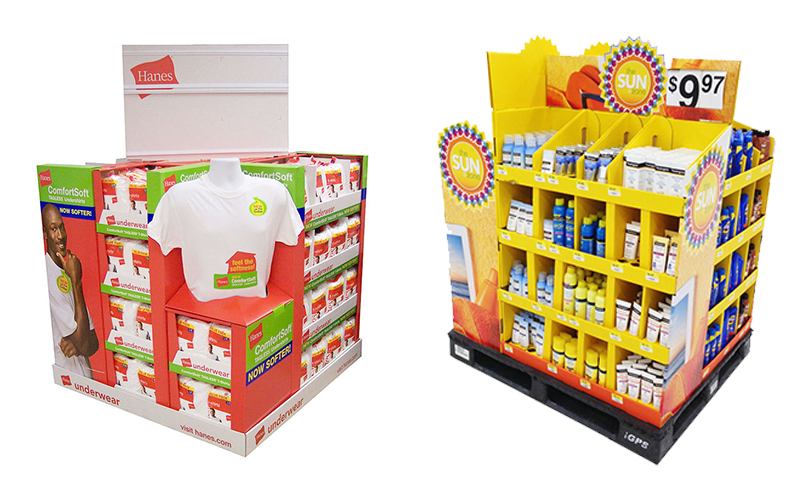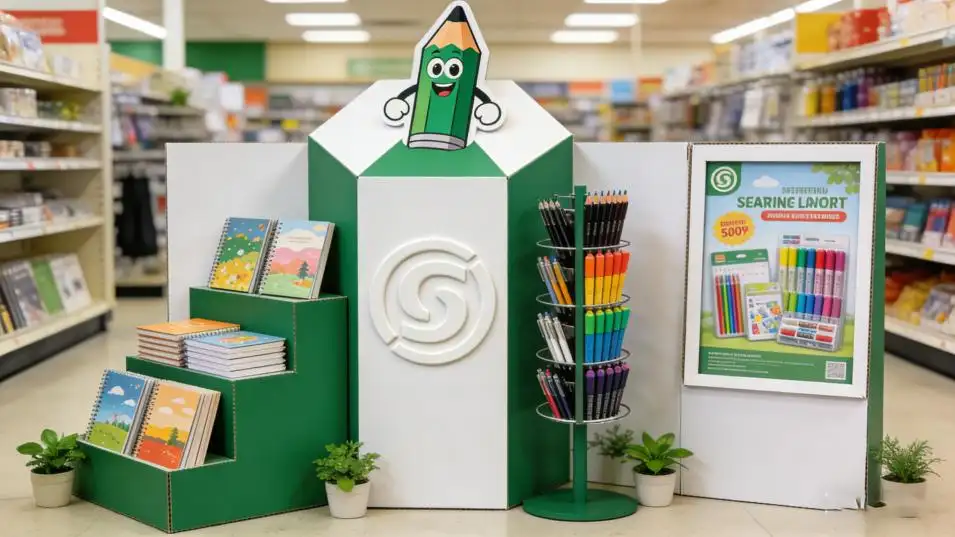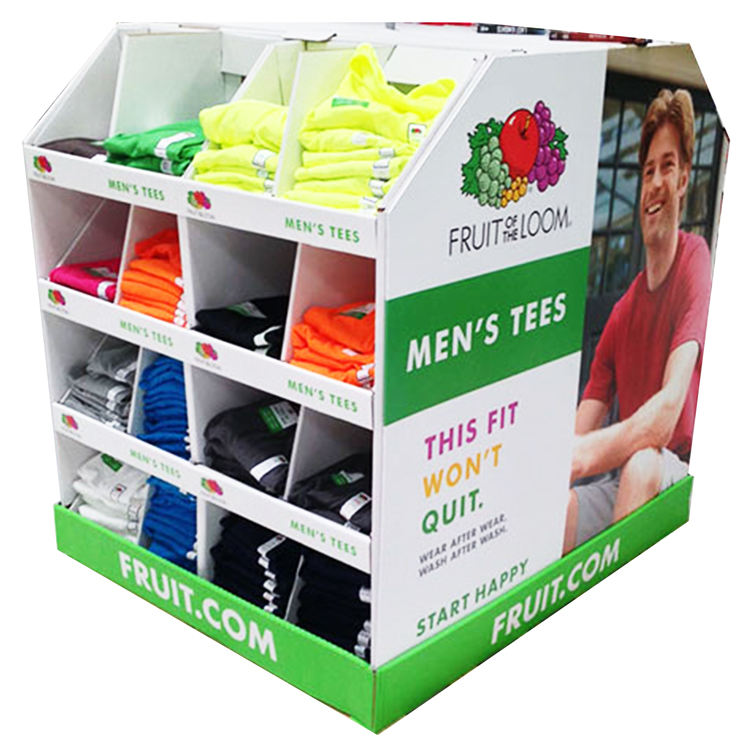Struggling to make your food or beverage products stand out? In a crowded store, your items get lost on the shelf. We can help you choose a display to get noticed.
The best cardboard display solutions are always tailored to your specific product and marketing goals. Floor displays offer high visibility, counter displays drive impulse buys, and pallet displays are perfect for high-volume promotions. The key is matching the display to your retail environment.
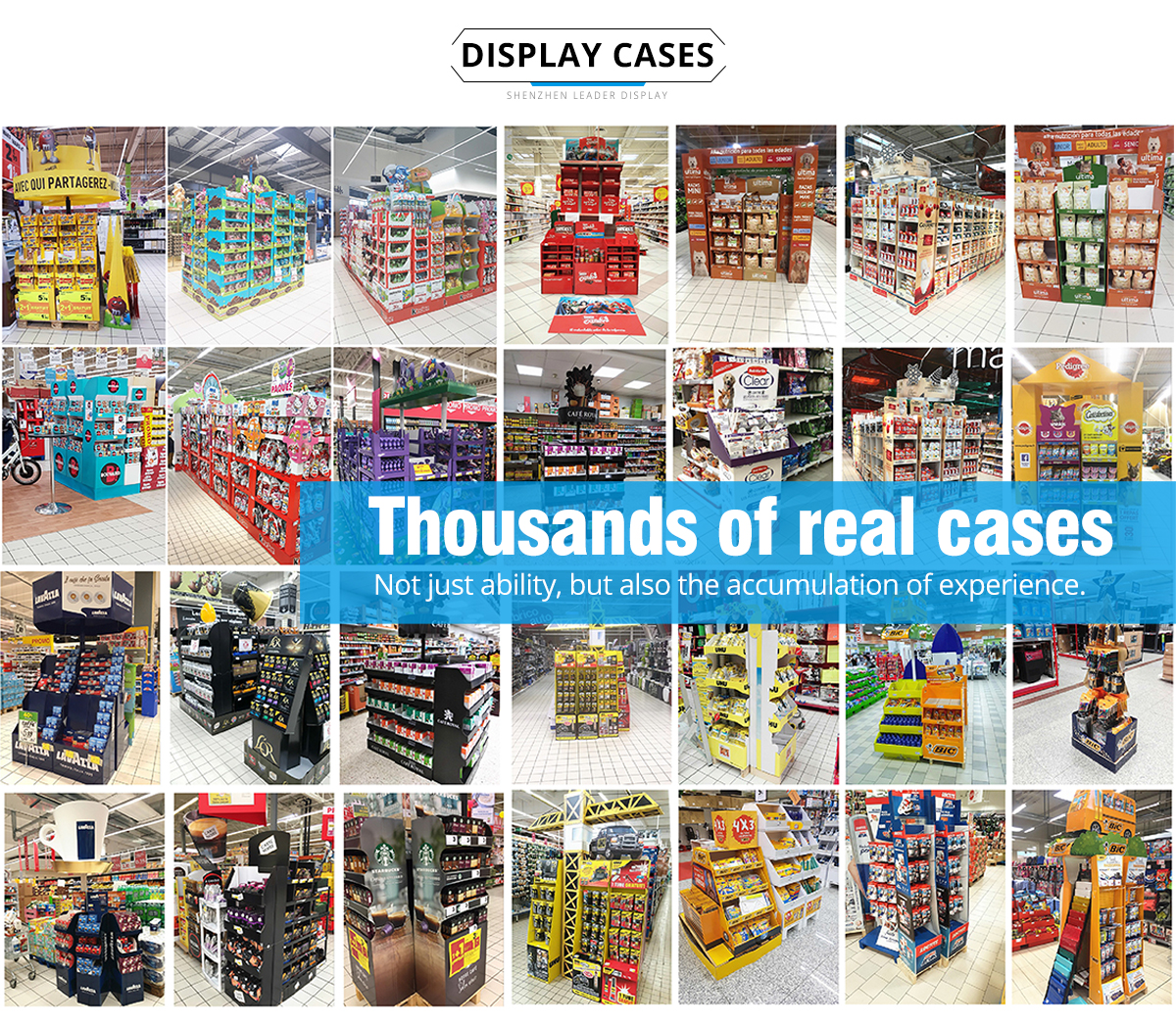
Choosing the right display can feel overwhelming. With 16 years of experience in this industry, I've learned what works and what doesn't. A great display is more than just a box; it's a silent salesperson for your brand. Let's break down the best options so you can make a smart choice that boosts visibility and drives sales. Going through these options will help you find the perfect fit for your products.
Are Floor Displays the Ultimate Tool for In-Aisle Visibility?
Is your new snack or drink getting ignored on the shelf? Retail shelves are packed with competitors. A custom floor display makes your brand the main attraction in the aisle.
Yes, for maximum in-aisle impact, floor displays, also known as FSDUs, are an excellent choice. They are large, standalone units that you can place in high-traffic areas. This gives you a dedicated space to tell your brand story and showcase products away from crowded shelves.
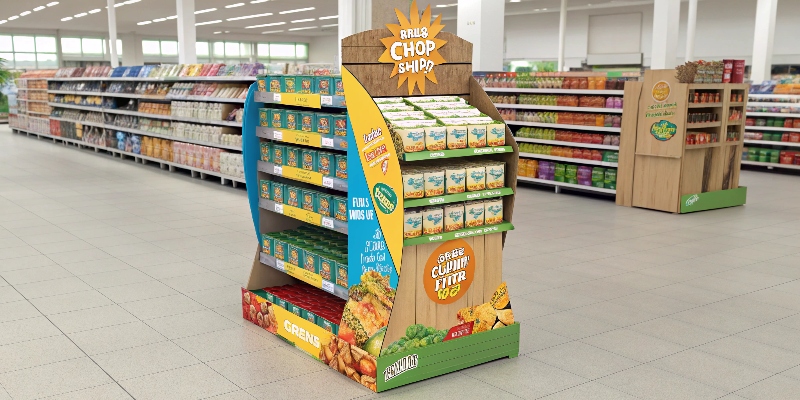
Floor displays are my go-to recommendation for brands launching a new product or running a major campaign. Their biggest advantage is their size and independence. You are not limited by standard shelf dimensions. This freedom allows for creative shapes and large, vibrant graphics that grab a shopper's attention from a distance. I remember a project with a new soda brand. We designed a floor display shaped like their unique bottle. It stopped shoppers in their tracks because it was so different. Good design is critical. The display must be structurally sound to hold the weight of your products, whether they are heavy glass bottles or lighter bags of chips. We always focus on creating a stable base and strong shelves.
Structural Integrity for Heavy Products
For beverages or heavy food items, we use a stronger grade of corrugated cardboard, often with internal supports. The design must prevent sagging or collapse. A well-engineered display protects your product and your brand's reputation.
Maximizing Graphic Space
A floor display is a 360-degree billboard. We design them with clear branding on all visible sides. This ensures that no matter which direction a customer approaches from, your message is clear.
Here’s a quick comparison of when a floor display works best:
| Feature | Best For | Why It Works |
|---|---|---|
| High Visibility | New Product Launches | Grabs attention away from the competition. |
| Large Capacity | Promotions & Sales | Holds more stock, reducing restock frequency. |
| Custom Shape | Unique Brand Story | Creates a memorable and interactive experience. |
| Standalone | High-Traffic Areas | Can be placed at aisle ends for maximum exposure. |
How Can Counter Displays Turn Impulse Buys into Guaranteed Sales?
Are customers walking right past your smaller items like candy bars or single-serve drinks? The checkout counter is prime real estate. A simple counter display can capture that final sale.
Counter displays, or CDUs, are designed to trigger last-minute purchase decisions. Placed near the cash register, they put small, high-margin items directly in the customer's line of sight just as they are about to pay. This is the perfect moment to remind them of a treat.

I've seen counter displays work wonders for brands. They are small but powerful. Their success depends on convenience and visibility. The key is to make the product easy to see and easy to grab. A few years ago, I worked with a small granola bar company. Their product was getting lost in the health food aisle. We created a simple, small-footprint counter display for them. They got placements in cafes and small grocery stores. Sales increased significantly because they were now in the perfect spot for a customer looking for a quick, healthy snack. The design must be compact to avoid cluttering the checkout area, but it also needs bold graphics to stand out.
Designing for a Small Footprint
Counter space is limited, so the display has to be efficient. We design CDUs to hold a good amount of product without being bulky. Tiered designs are a great way to show off different flavors or varieties in a small space.
Encouraging Interaction
A great CDU makes the product look appealing and easy to take. We often use a sloped front or an open-top design. This lets customers easily see and grab the item. If a display is hard to shop from, customers will just ignore it. A well-designed display makes the choice to buy effortless.
When Should You Use a Pallet or Dump Bin Display?
Are you planning a big holiday promotion or clearing out seasonal items? Standard shelving will not work. A massive pallet or dump bin display can handle the volume and create a huge visual impact.
You should use pallet or dump bin displays for high-volume sales, seasonal promotions, or clearance events. They are large, easy-to-shop displays that hold a lot of product. This creates a feeling of abundance and value, which encourages customers to buy more.
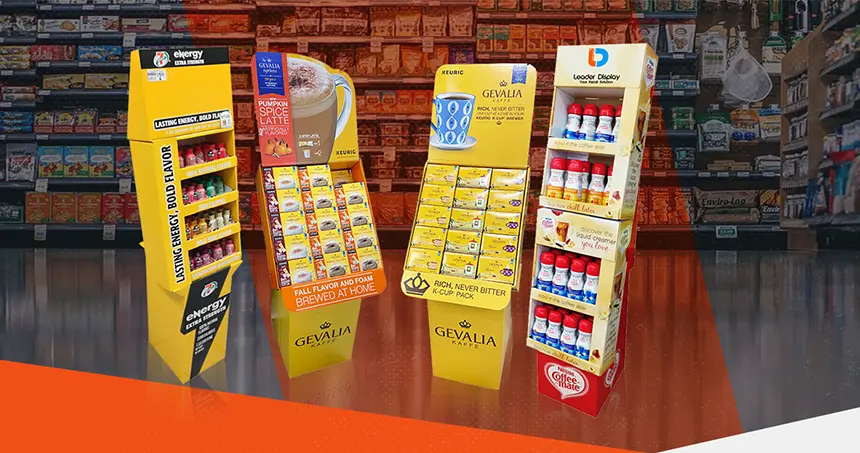
Pallet displays and dump bins1 are the heavy hitters of retail. They are all about volume, value, and convenience—for both the customer and the retailer. Pallet displays are often shipped pre-loaded with products, so the store staff just has to place them on the floor. This saves a huge amount of time. Dump bins are fantastic for creating a “treasure hunt” feel. They work well for irregularly shaped items or products with a low price point. I once helped a potato chip brand with a "Big Game" promotion. We created a giant dump bin that looked like a football field. It was a huge success because it was fun and suggested that shoppers should stock up for their party. Both display types signal to the customer that there's a special deal happening.
The Power of Abundance
Seeing a large quantity of a single product makes people feel like they are getting a great deal. It’s a psychological trigger2 that works very well for food and beverage items, which are often purchased in multiples.
Logistical Advantages for Retailers
Retailers love these displays. A pallet display can be moved with a pallet jack and placed on the sales floor in minutes. This cuts down on labor costs for stocking individual shelves. It’s a win-win for both the brand and the store.
Here's a simple breakdown:
| Display Type | Primary Use Case | Key Benefit |
|---|---|---|
| Pallet Display | High-volume, uniform products | Easy for retailers to set up. |
| Dump Bin | Clearance, seasonal, mixed items | Encourages "treasure hunt" shopping. |
How Do You Choose the Right Materials for Food and Beverage Displays?
Do you worry your cardboard display won't be strong enough, especially for heavy drinks? A flimsy display can damage products and hurt your brand. Choosing the right material ensures strength and safety.
The secret is choosing the right corrugated cardboard strength3, or flute, to support your product's weight. For drinks or refrigerated items, food-safe, moisture-resistant coatings are essential. Also, always choose recyclable materials to meet consumer expectations for sustainability4.
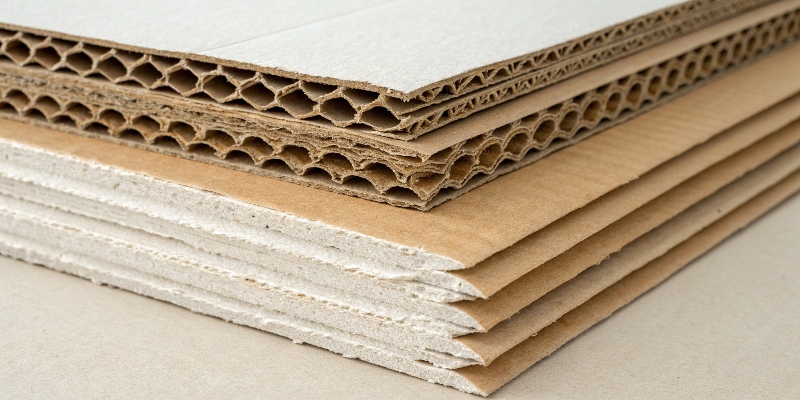
Over my 16 years in this business, material selection has become more and more important. It’s not just about making a display that looks good; it has to perform. For a display holding wine bottles, for example, we'd use a strong B-flute5 corrugated board. For a lighter product like cookies, a finer E-flute6 might work better because it allows for higher-quality printing. The environment where the display will sit is also a major factor. A display for a refrigerated section needs a special coating to prevent the cardboard from getting soggy and weak from condensation. We often use aqueous coatings, which are water-based and food-safe, to provide this protection.
Understanding Corrugated Strength
Cardboard isn't just paper; it's an engineered material. The wavy layer inside, the flute, provides strength.
- B-Flute: Thicker, very strong. Great for holding heavy items like drink cans or jars.
- E-Flute: Thinner, provides a smoother surface for printing. Good for lighter products like snack bars.
- BC-Flute: A double-wall combination for maximum strength, used for very heavy pallet displays7.
Food-Safe and Moisture-Resistant Finishes
Protecting the product and the display is key. We use coatings that are certified as food-safe, so they can be in direct contact with packaging. These coatings create a barrier against moisture, grease, and scuffs, keeping the display looking fresh for longer.
The Importance of Sustainability
Today, brands and customers care about the environment. That’s why we focus on using materials that are not only strong but also 100% recyclable. We also recommend printing with soy or other vegetable-based inks. A sustainable display is a powerful part of your brand story.
Conclusion
The best food and beverage display matches your product, goals, and retail space. From floor units to counter displays, the right custom cardboard solution will boost your visibility and sell more products.
-
Learn how dump bins can engage customers and increase impulse purchases through creative display strategies. ↩
-
Understanding psychological triggers can help you design effective marketing strategies that boost sales. ↩
-
Discover how the right cardboard strength can ensure product safety and display durability. ↩
-
Explore sustainable practices in display design that resonate with eco-conscious consumers. ↩
-
Learn about B-flute's strength and applications for heavy products in retail displays. ↩
-
Understand the advantages of E-flute for lighter products and its impact on display aesthetics. ↩
-
Explore how pallet displays can enhance product visibility and drive sales in retail environments. ↩


